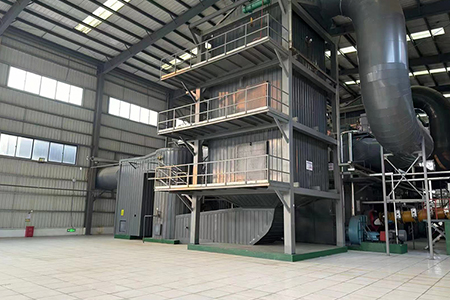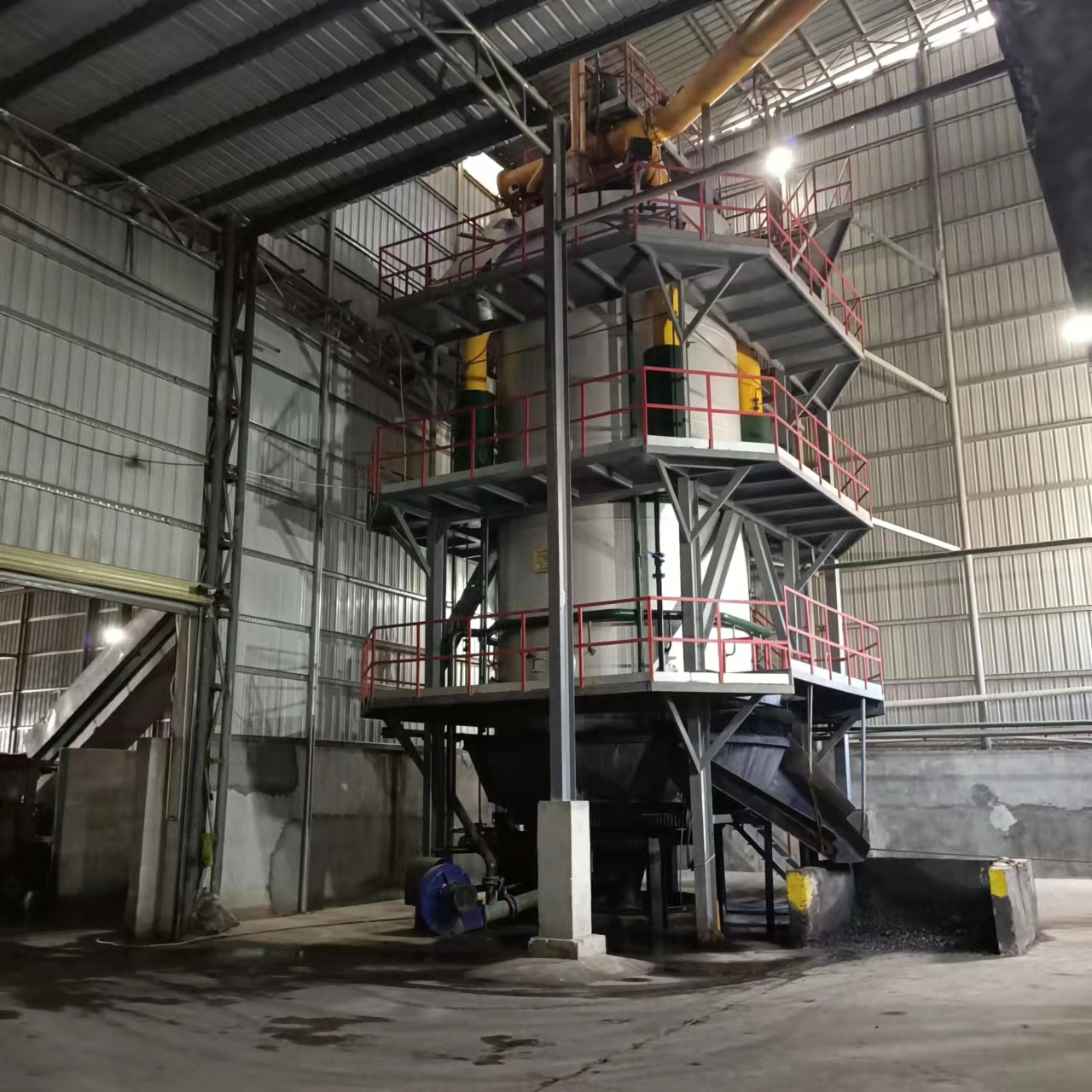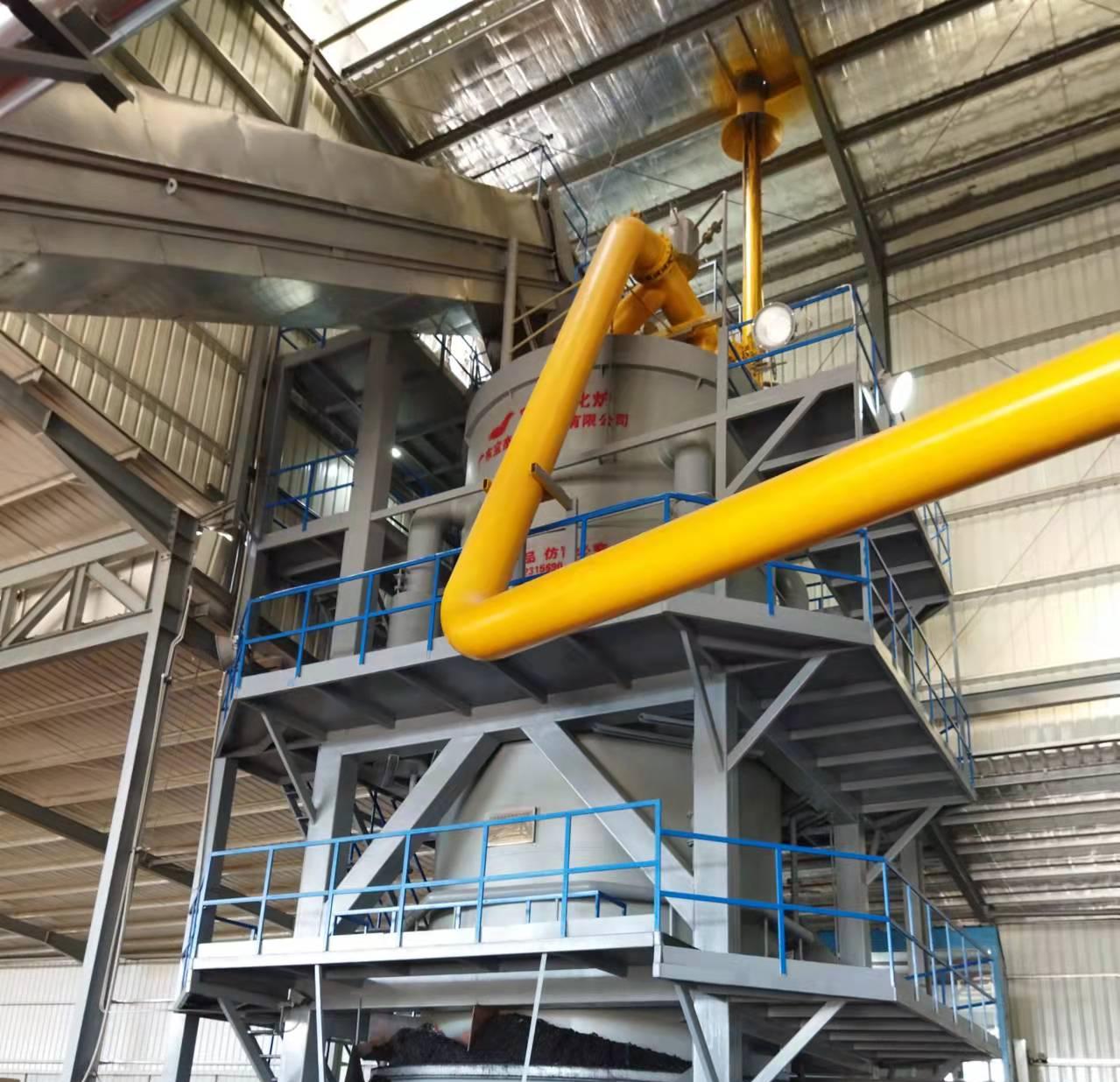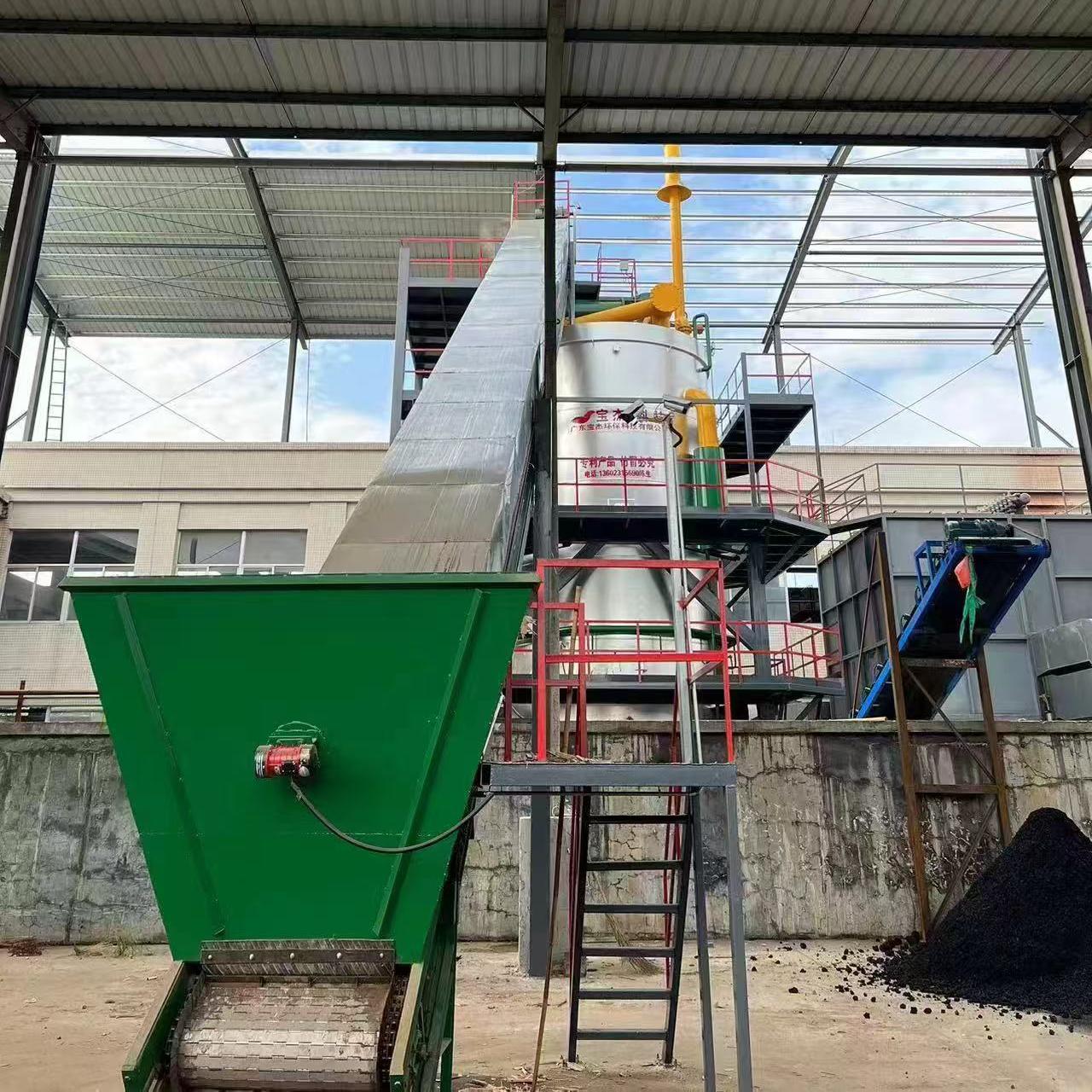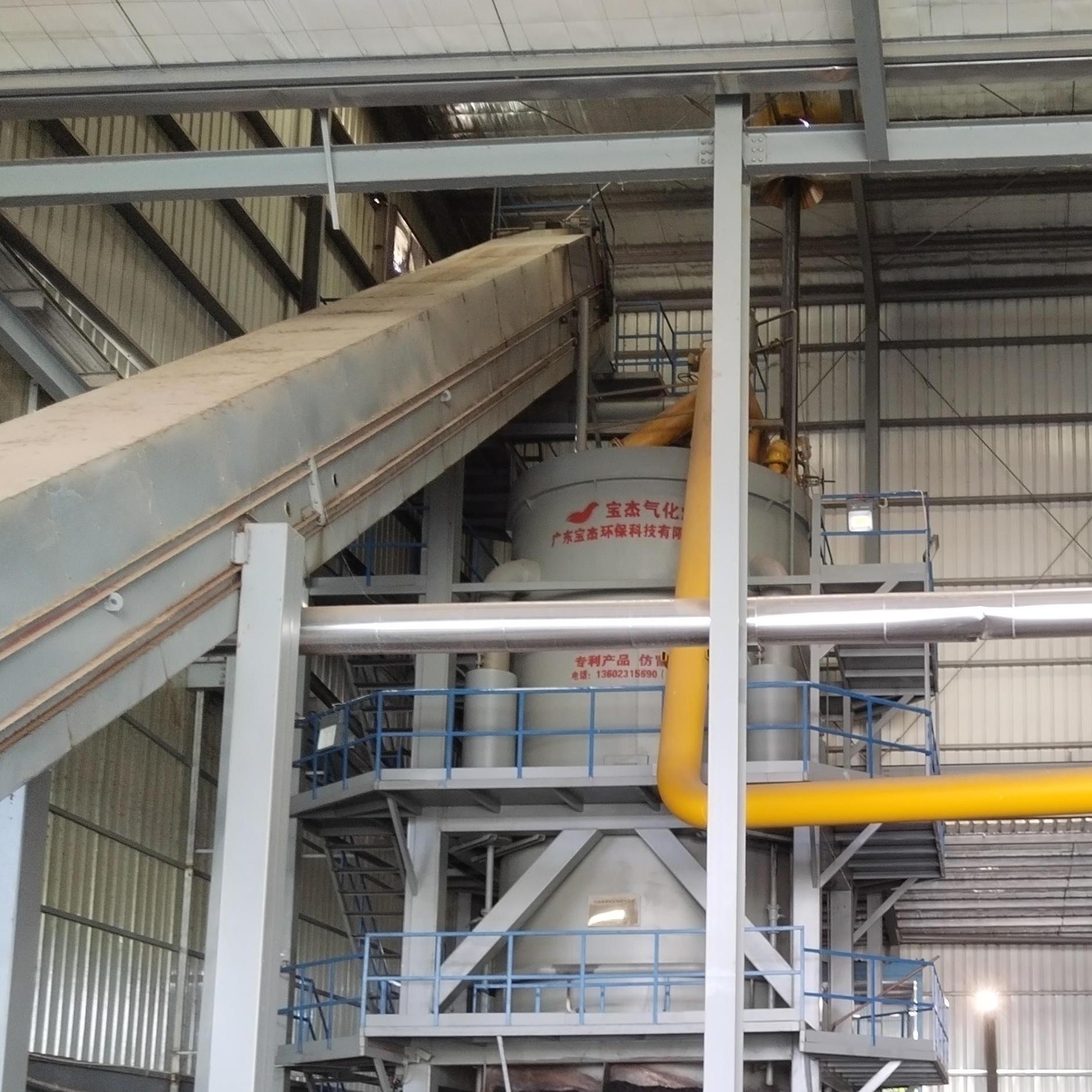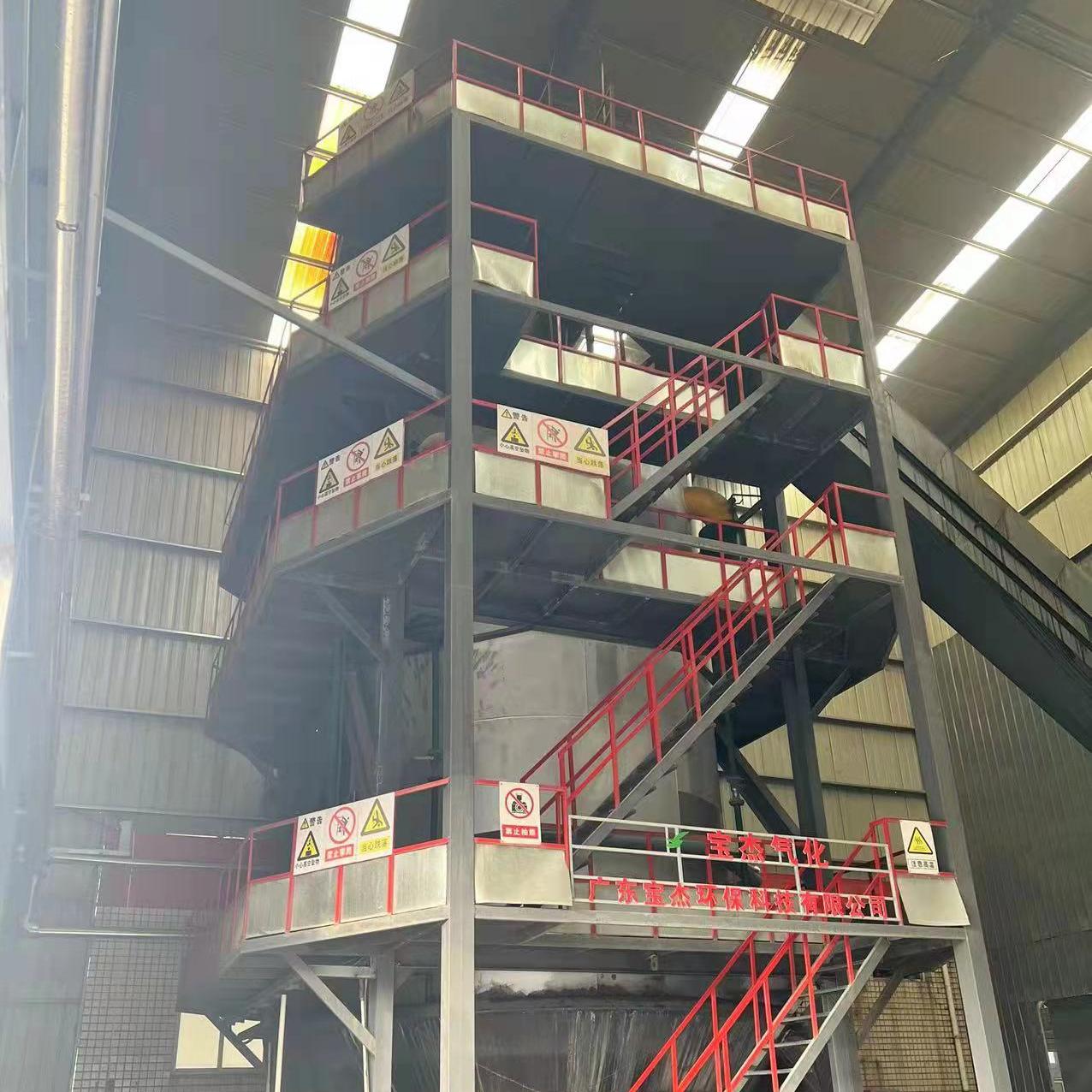R&D and manufacture of biomass gasification equipment, environmental protection equipment, boiler equipment, investment in heating (steam) energy operation and management.
Tel:+86 0769-82928980
E-mail:[email protected]
Web Menu
Product Search
Exit Menu
Industry News
What Safety Measures Are Essential When Operating a 35 Tonne Biomass Gasifier?
Biomass gasification is a process that converts organic materials such as wood, agricultural residues, or other biomass into syngas (synthetic gas), which can be used for electricity generation, heating, or industrial processes. A 35 tonne biomass gasifier is a large-scale system designed for industrial applications, capable of processing substantial amounts of biomass daily. While these gasifiers are highly efficient and environmentally friendly, operating them involves significant safety considerations due to high temperatures, combustible gases, and mechanical components.
This article provides a comprehensive guide on the essential safety measures when operating a 35 tonne biomass gasifier, including site preparation, operational protocols, personnel training, maintenance, and emergency procedures.
1. Understanding the Hazards of Biomass Gasification
Before outlining safety measures, it is important to understand the primary risks associated with biomass gasification:
1.1 Fire and Explosion Risk
- Gasification produces flammable syngas, which contains hydrogen, carbon monoxide, and methane.
- Accumulation of syngas in confined areas or leaks can lead to explosions.
- High-temperature operations increase the risk of thermal ignition.
1.2 High-Temperature Surfaces
- Gasifiers operate at temperatures ranging from 700°C to 1,000°C in the reaction zones.
- Contact with hot surfaces or molten slag can cause severe burns.
1.3 Mechanical Hazards
- Large-scale systems include feed conveyors, augers, turbines, and gas cleaning units, which can pose entanglement or crushing risks.
1.4 Toxic Gas Exposure
- Syngas contains carbon monoxide (CO), which is colorless, odorless, and highly toxic.
- Improper venting or leaks can result in poisoning or asphyxiation.
1.5 Environmental Hazards
- Dust and fine biomass particles can pose respiratory hazards.
- Noise from large gasifiers may require hearing protection.
Understanding these hazards is critical for implementing robust safety measures.
2. Site Preparation and Installation Safety
The location and setup of a 35 tonne biomass gasifier significantly influence operational safety:
2.1 Proper Ventilation
- Install gasifiers in areas with adequate airflow to prevent the buildup of flammable or toxic gases.
- Ensure exhaust vents and gas cleaning systems are properly designed to safely discharge syngas by-products.
2.2 Fire Safety Infrastructure
- Equip the site with fire extinguishers, fire blankets, and automatic sprinkler systems.
- Maintain emergency exits and access routes for personnel.
- Avoid storing flammable materials near the gasifier.
2.3 Structural Integrity
- Ensure that foundations can support the weight of the 35 tonne unit and associated equipment.
- Verify that piping, ducts, and support structures meet industrial safety standards for pressure and temperature.
2.4 Signage and Warnings
- Clearly mark high-temperature zones, hazardous gas areas, and restricted access points.
- Install emergency shutdown buttons with visible signage.
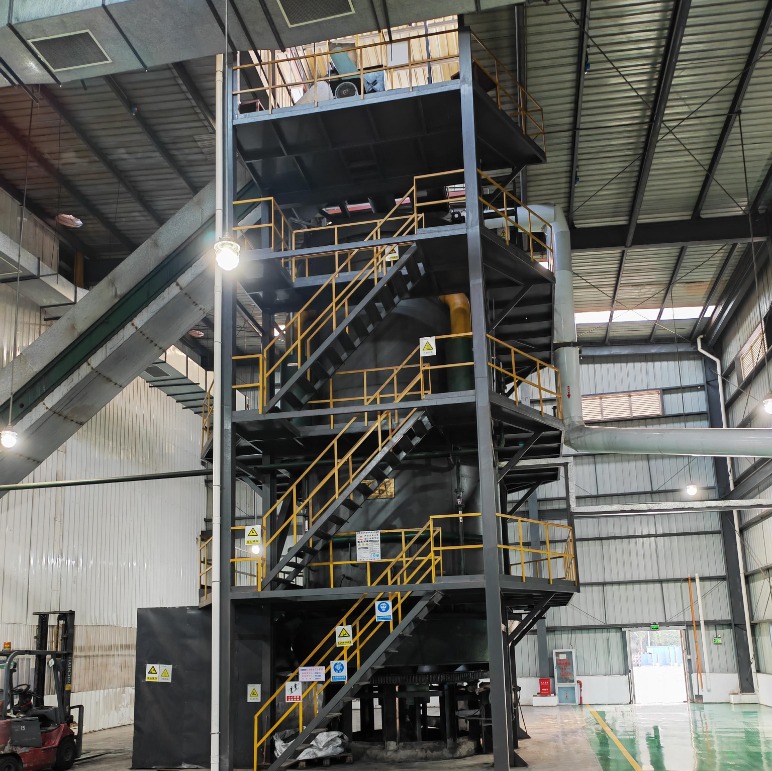
3. Personnel Safety and Training
Human error is a major factor in gasifier incidents. Comprehensive training and protective equipment are essential:
3.1 Operator Training
- Operators should understand biomass feedstock handling, gasifier control systems, syngas properties, and emergency procedures.
- Conduct regular safety drills for fire, gas leaks, and mechanical failures.
3.2 Personal Protective Equipment (PPE)
- Operators must wear heat-resistant gloves, flame-retardant clothing, safety goggles, and hard hats.
- Respiratory protection, such as gas masks or filters, is essential in areas where syngas or dust may accumulate.
- Hearing protection should be used in high-noise zones.
3.3 Restricted Access
- Only trained personnel should operate or perform maintenance on the gasifier.
- Implement a lockout-tagout (LOTO) system for maintenance, preventing accidental startup during servicing.
4. Operational Safety Measures
Safe operation of a 35 tonne biomass gasifier involves continuous monitoring and strict adherence to protocols:
4.1 Feedstock Management
- Use dry, uniform biomass to reduce the risk of clogging, uneven combustion, or uncontrolled emissions.
- Avoid materials with high moisture or foreign objects, which may create sparks or mechanical damage.
4.2 Temperature and Pressure Control
- Maintain reaction chamber temperatures within manufacturer-specified ranges.
- Monitor pressure levels to prevent overpressure incidents.
- Use automated sensors to trigger alarms or shutdowns in case of abnormal readings.
4.3 Gas Monitoring
- Continuously measure syngas composition and carbon monoxide levels.
- Install leak detectors around gas pipelines, valves, and storage areas.
4.4 Emergency Shutdown Systems
- Equip the gasifier with automatic and manual shutdown mechanisms.
- Ensure operators know how to safely depressurize and isolate the system in emergencies.
5. Maintenance and Inspection Safety
Routine maintenance is crucial for preventing accidents and maintaining efficiency:
5.1 Scheduled Inspections
- Inspect piping, valves, burners, filters, and feed systems regularly.
- Check for signs of wear, corrosion, or leaks.
5.2 Cleaning and Handling Residues
- Gasifiers produce ash and slag, which may be hot and chemically reactive.
- Use heat-resistant tools and PPE when removing residues.
- Ensure residues are stored or disposed of safely to prevent spontaneous combustion.
5.3 Component Replacement
- Only certified replacement parts should be used.
- Follow manufacturer guidelines to ensure proper installation and alignment.
6. Fire and Explosion Prevention
Given the combustible nature of syngas, fire prevention is critical:
- Control ignition sources: Avoid open flames, sparks, or hot surfaces near syngas outlets.
- Grounding and bonding: Prevent static electricity that could ignite dust or gas.
- Pressure relief valves: Ensure all vessels have properly sized relief valves.
- Regular leak checks: Use soap solutions, gas detectors, or ultrasonic leak detection tools.
7. Emergency Response Planning
Preparedness is key to minimizing risks in case of an incident:
7.1 Fire Response
- Train personnel on fire extinguisher usage, evacuation routes, and fire suppression systems.
- Identify assembly points for safe evacuation.
7.2 Gas Leak Response
- Evacuate personnel immediately if carbon monoxide or syngas leak is detected.
- Activate emergency ventilation and isolate the gasifier.
7.3 Medical Response
- Keep first-aid kits and oxygen supplies nearby for exposure incidents.
- Ensure staff are trained in CPR and treatment for CO poisoning.
7.4 Documentation and Reporting
- Maintain incident logs, safety audits, and compliance reports.
- Use data to improve safety protocols and prevent recurrence.
8. Regulatory Compliance and Best Practices
Operating a 35 tonne biomass gasifier safely also involves adherence to national and international standards:
- Occupational Safety and Health Administration (OSHA) guidelines for industrial safety.
- Local environmental and emission regulations to ensure safe handling of by-products.
- ISO 9001 and ISO 14001 standards for quality and environmental management systems.
- Conduct regular safety audits to ensure compliance with legal and manufacturer requirements.
9. Benefits of Proper Safety Measures
Implementing these safety measures provides multiple advantages:
- Reduced accident risk: Protects operators and prevents equipment damage.
- Improved efficiency: Well-maintained gasifiers run more smoothly and consistently.
- Regulatory compliance: Avoids fines and legal issues related to workplace safety.
- Extended equipment lifespan: Proper operation and maintenance prevent premature wear.
- Environmental protection: Prevents unintentional emissions, leaks, or fires that could harm surrounding areas.
10. Conclusion
Operating a 35 tonne biomass gasifier offers significant energy and environmental benefits, but it comes with inherent risks due to high temperatures, combustible gases, and mechanical components. Essential safety measures include:
- Proper site preparation with ventilation, fire suppression, and structural integrity.
- Comprehensive personnel training and use of personal protective equipment (PPE).
- Strict operational protocols for feedstock management, temperature, and gas monitoring.
- Routine maintenance, inspection, and safe handling of residues.
- Fire, explosion, and emergency response planning.
- Compliance with regulatory standards and best practices.
By following these safety measures, industrial operators can ensure efficient, reliable, and safe biomass gasification, protecting personnel, equipment, and the environment. Safety is not just a legal requirement—it is a critical component of sustainable energy production and responsible industrial operation.
Quick Links
Products
contact Us
 Tel: +86 0769-82928980
Tel: +86 0769-82928980 Fax: [email protected]
Fax: [email protected] E-mail: [email protected]
E-mail: [email protected] Company Address: Dalang Chamber of Commerce Building, No. 288 Yinlang South Road, Dalang Town, Dongguan City 13333, China
Company Address: Dalang Chamber of Commerce Building, No. 288 Yinlang South Road, Dalang Town, Dongguan City 13333, China Factory Add:
West side of Centre Road and south side of Zhongyuan Road within Hongcaoyuan, Hongcao Town, Shanwei Urban District
Factory Add:
West side of Centre Road and south side of Zhongyuan Road within Hongcaoyuan, Hongcao Town, Shanwei Urban District
Copyright© 2022 Guangdong Bao Jie Technology Co., Ltd.All Rights Reserved.


 EN
EN 